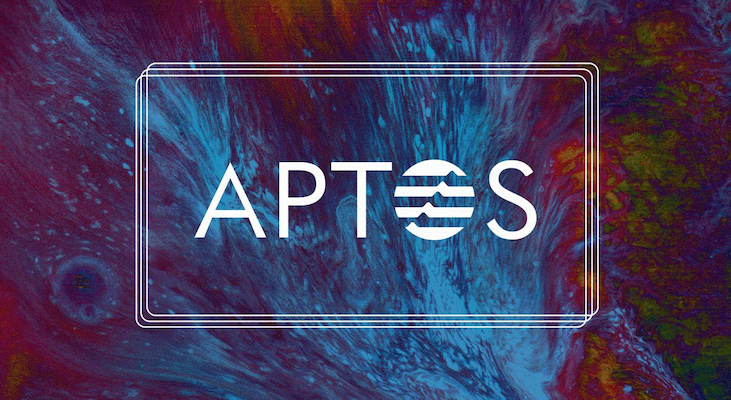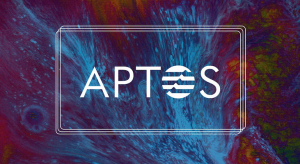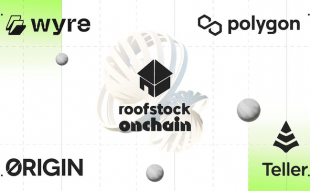Join Our Telegram channel to stay up to date on breaking news coverage
The eagerly awaited blockchain from ex-Facebook employees had a bumpy start.
The much-anticipated blockchain called Aptos, which was created by young geniuses from Silicon Valley, has become this week’s crypto joke. People claimed that the project wasn’t appropriate after its rough (and harshly criticized) premiere on Monday.
In its first 24 hours of trading, its token, APT, fell by approximately 50%, and the crypto network, which advertises a maximum transaction count of 100,000, initially only processed four transactions per second. At the time of writing, the project, which had prelaunch private funding rounds valued at $2 billion, has a $959 million market valuation. Do those data points make you cringe or do you laugh? I suppose it depends on how big your bag is.
At CoinDesk’s first-ever I.D.E.A.S conference this week, we spoke with a few industry professionals and got the impression that some were hoping the project would fail. While Aptos may present some technology advancements that should be commercialized, it also exemplifies the insider-first approach to cryptocurrency development that is incompatible with the principles of cryptocurrency.
Ambitions of scale
Current blockchains “simply aren’t as stable as conventional financial rails, we’ve witnessed issues with downtime and outages that extend for hours,” according to Aptos CTO Avery Ching in a blog post.
In a long line of layer-1 blockchain networks that have entered the market, Aptos is the most recent. The Move programming language and the Move virtual machine, which were developed and optimized for blockchain use cases, are utilized by the blockchain for application development.
The layer-1 blockchain asserts that it can process 130,000 transactions per second. Engineers claim that it is not even close to the Bitcoin (CRYPTO: BTC) network in terms of speed, though it is still far from that.
The issue was addressed by the founder of Aptos, Mo Shaikh, who tweeted that “the current TPS is not representative of the network capacity – this was the network idling ahead of projects coming online. As there is more activity, this number is anticipated to rise. I hope this clarifies any TPS misunderstandings.
Aptos is broken.
Aptos launched today – October 17, 2022 at 14:22:40
However, Aptos is currently has a lower tps than Bitcoin and a majority of tokens are either staked or ready to be dumped on retail investors.
Curious? Thread Below
👇— Paradigm Engineer #420 (@ParadigmEng420) October 17, 2022
Facebook origins
The majority of Aptos’ key team members came from Facebook parent Meta Platforms’ unsuccessful Libra/Diem project, which also generated criticism when it was first revealed in late 2019. Libra also touted a cutting-edge strategy for promoting cryptocurrency adoption: a stablecoin backed by cryptocurrencies, fiat currencies, and other assets that had the potential to become a major reserve currency by utilizing the enormous user bases of Facebook, WhatsApp, and Instagram. These three social media sites are owned by Meta.
Libra swiftly complied with the regulators’ requests, and finally the original idea had become so distorted that it was no longer recognisable. In hindsight, due to people’s ingrained mistrust of Meta following years of privacy violations and other crimes against humanity, Zuckbucks was already dead when he arrived.
However, Facebook made significant investments in the project, leading to the creation of innovative blockchain scaling tools and the Move programming language. People were thrilled when Aptos was revealed because it meant that something could be created without Diem’s burdens. After a launch that even co-founder Mo Shaikh conceded “could have gone better,” Aptos appears to have adopted some of the worst characteristics of the cryptocurrency industry.
Cobie, a semi-pseudonymous market commentator who serves as a sort of moral compass for the cryptocurrency industry, expressed grave concerns about the lack of disclosure of key information regarding Aptos’ tokenization plan, such as the token supply and initial distribution, prior to the APT token’s listing on exchanges like Binance, FTX, and Coinbase.
Less than a day before the token could be traded, those data were made public, but it didn’t end the commotion. 49% of Aptos’ 1 billion initial token supply, according to a blog post, would go to “key contributors, investors, and the foundation.”
A small number of tokens are set aside for the “community,” which will likely be given to those prepared to create blockchain-based applications and protocols. Although the blog indicates that “a majority” (or about 41%) of APT will be given to the Aptos Foundation and “a smaller amount” (10%) will go to Aptos Labs, the term “community” may not be well defined in this case.
A one-year token lockup was agreed to by insiders in order to stop venture capitalists and other significant holders from dumped on retail. However, about half of the entire supply of those tokens can also be staked to earn up to 7% in daily token rewards, and such emissions are not subject to the lockup (meaning they can be dumped).
Additionally, it seems that insiders had access to stake on October 12, five days ahead of the mainnet launch. The method was described as “a cunning way to gain liquidity as backers normally possess [a] big volume of supply” by pseudonymous crypto expert AkadoSang. (FTX Ventures and Jump Capital led a $150 million investment in July, and in March and September, respectively, Coinbase and Binance both had “strategic investment rounds”).
A fair defense
Even with all of these warning signs, one can quickly also defend Aptos, if only for the sake of fairness. First off, it seems unfair to criticize a just established blockchain for having low TPS numbers when no functioning transactional infrastructure has yet been created.
Second, Aptos’ tokenization strategy is comparable to rivals Solana, Near, and Flow, all of whom have since used their “community”-directed tokens to pay awards. Aptos’ tokenization strategy is far from being a fair launch.
Last but not least, even though Coinbase and Binance’s “strategic” investments appear dubious, they appear to have simply been purchasing tokens early so that users would have something to trade at or near launch. They sought to enter the market because traders also want entry because Aptos was greatly anticipated.
All of this does not answer the distinct and significant question of whether the world requires another another layer 1 blockchain. Every blockchain currently basically has extra space for blocks, and even Ethereum is inexpensive to use once more. And during the previous bull market, we observed that the majority of “scalable” blockchain, such as Solana, encountered processing problems due to scalability — it’s unclear if Aptos discovered the proper solution there.
We’ll leave you with a few comments from billionaire Haseeb Qureshi, who used his venture capital firm Dragonfly Capital to make an investment in Aptos:
“Investing into a new Layer 1 is really about… building a more scalable operating system for blockchains. We’re still at the beginning of this journey, right? Smart contract blockchains have existed since Ethereum, about seven years ago and we’re clearly not done. These systems are so primitive, and we’re learning so much in real time about how to make them faster and perform better.”
“I remember back when I first became a VC, people used to argue whether proof-of-stake was even possible,” Qureshi continues. “Now we’re in a world where the second largest blockchain has completed a transition to proof-of-stake. We’ve learned so many things about what’s possible with respect to pipelining transactions, parallel execution of generalized computation – with what Solana has done, what NEAR has done, what Polygon and Avalanche have done right.”
“A big part of the reason why we were excited to back Aptos is pretty clear: It’s another step in blockchain evolution. Now, that doesn’t mean that I know for certain that Aptos is [going to] win. But I can tell that what these guys are doing is important.”
Are there other tokens that can do well in a bear market?
It is a question in everyone’s mind – during the crypto winter, is there anything you can invest in, that can still do well, in the short, medium or long-term? There are two projects currently on pre-sale that we wanted to mention.
IMPT (The Impact Project)
One of the very promising projects we have on our list is IMPT.io, a brand-new project in the area of green technology, focused on using blockchain to create a more sustainable world. This blockchain-based ecosystem aims to transform the opaque carbon credit market by incentivizing individuals and companies to reduce CO2 emissions.
IMPT’s primary service is streamlining the process of obtaining and trading carbon credits, which play a fundamental role in the fight against climate change. These carbon credits are essentially contracts that allow the holder to emit a specific amount of CO2 into the atmosphere. Each carbon credit typically relates to one ton of carbon dioxide emissions.
As noted in IMPT’s whitepaper, the volume of carbon credits required globally is expected to increase at least 20-fold by 2035. This increase in demand necessitates a safe and transparent marketplace that allows individuals and companies to work together for the common good.
IMPT raises over $5 million in the first two weeks of the presale
The presale for IMPT has commenced, and the project has already managed to successfully sell out almost $5 million. As the presale progresses, the price will steadily rise, meaning that the earliest buyers are the ones who will end with the best deal.
While there was a brief early adopter sale, right now, IMPT is in its first presale phase with IMPT tokens being sold for just $0.018. There are a total of 600,000,000 tokens (3 billion IMPT is the max supply) up for grabs during this round, with a further 660 million to be sold for $0.023 during round two, and another 540 million to be sold during the third and final presale phase for $0.0280.
Dash 2 Trade – Upcoming IEO That Shouldn’t be Missed
One of the best initial exchange offerings that just launched is Dash 2 Trade. In a nutshell, Dash 2 Trade is building an innovative analytics dashboard that will offer high-level access to a full suite of crypto analysis tools. This includes a crypto signal service, which offers the Dash 2 Trade community trading suggestions.
For instance, the analytics platform might suggest going short on XRP/USD, with an entry price of $0.52. Each and every signal at Dash 2 Trade will also provide the suggestion stop-loss and take-profit orders for risk management purposes. Dash 2 Trade will also offer access to its analytical insights.
This includes metrics that scan social media platforms for insight into the top trending cryptos. Another notable feature of the Dash 2 Trade analytics platform is that it provides the community with real-time updates on the best IEO cryptos that should not be missed. This is in addition to trading competitions and access to high-level charts and market data.
D2T Presale
Dash 2 Trade has recently gone on presale and it has already raised over $300,000 in the first few hours. We do know that there will be just 1 billion D2T tokens in supply and that the project is built on top of the Ethereum blockchain.
At the moment, the presale is making it available at a price of 0.0476 USDT for 1 DST. This price, however, will last only for as long as the sale’s first stage, at which point it will rise to 0.05 USDT. Given that stage one will end after it raises the equivalent of $1,666,000, DST could see its price increase very soon. As such, interested parties may want to act sooner rather than later
As per the whitepaper, Dash 2 Trade could be one of the best future cryptocurrency projects as we move toward 2023. Instructions on how to buy this promising coin can be found here.
Read more:
- Aptos Labs Raises $200 Million From Binance Labs And Other Investors
- Crypto Winter is Tough. The Following Are Five Crucial Survival Advices
- Interview with crypto analyst Philip Swift: Bitcoin bear market will last ‘2-3 more months max’
Join Our Telegram channel to stay up to date on breaking news coverage


